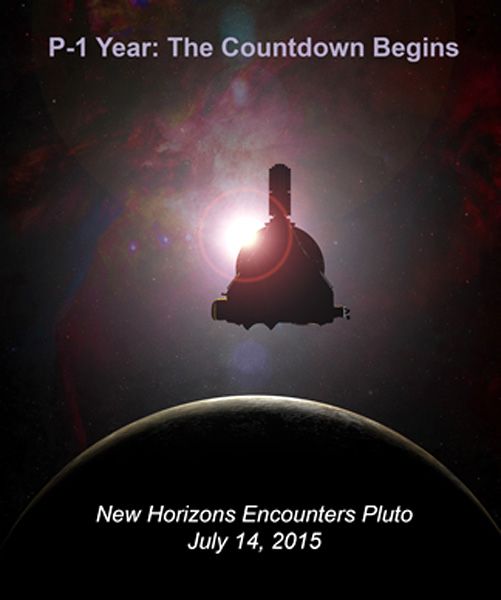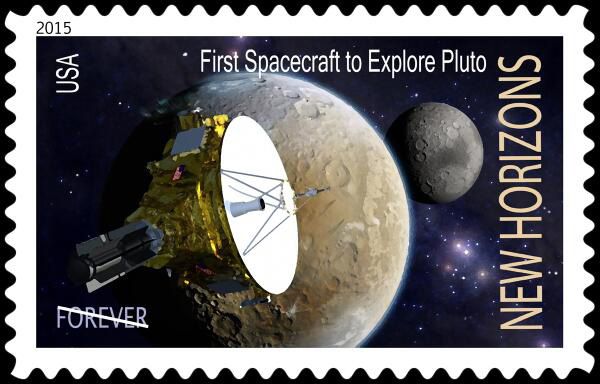
Image courtesy of the New Horizons Mission Website
New Horizons Only One Year from Pluto (Press Release)
In July 2015, NASA will discover a new world. No one knows what to expect when the alien landscape comes into focus. There could be icy geysers, towering mountains, deep valleys, even planetary rings.
At this point, only one thing is certain: Its name is Pluto.
On July 14th, 2015, NASA's New Horizons spacecraft will make a close flyby of that distant world. "Because Pluto has never been visited up-close by a spacecraft from Earth, everything we see will be a first," says Adriana Ocampo, the Program Executive for NASA's New Frontiers program at NASA headquarters. "I know this will be an astonishing experience full of history making moments."
The mission's principal investigator, Alan Stern of the Southwest Research Institute, has likened the way New Horizons will revolutionize knowledge about the Pluto system to the way that Mariner 4, which flew past Mars in July 1965, revolutionized knowledge of that planet. At the time, many people on Earth thought the Red Planet was a lush world with water and vegetation friendly to life. Instead, Mariner 4 revealed a desert world of haunting beauty.
New Horizons’ flyby of Pluto will occur almost exactly 50 years after Mariner 4’s flyby of Mars—and it could shock observers just as much.
Pluto is almost completely unknown. It is so far away, that even the Hubble Space Telescope strains to see it. The best images so far show little more than Pluto's shape (spherical) and color (reddish). Over the years, changes in those color patterns hint at a dynamic planet where something is happening, but no one knows what.
By late April 2015, New Horizons will be close enough to Pluto to take pictures rivaling those of Hubble—and it only gets better from there. At closest approach in July 2015, New Horizons will be a scant 10,000 km above the surface of Pluto. If New Horizons flew over Earth at the same altitude, it could see individual buildings and their shapes.
Flying so close to Pluto could be risky business. Pluto has five known moons: Charon, Styx, Nix, Kerberos, and Hydra. Numerical simulations show that meteoroids striking those satellites could send debris into orbit around Pluto, forming a debris system that waxes and wanes over time in response to changes in the bombardment. During the approach to Pluto, the science team will keep a wary eye out for debris, and guide the spacecraft away from danger.
"The New Horizons Team continues to do a magnificent job in keeping the spacecraft healthy and ready for this incredible rendezvous," Ocampo says. "The spacecraft is in good hands."
No one knows what New Horizons will discover. "Many predictions have being made by the science community, including possible rings, geyser eruptions, and even lakes," says Ocampo. "Whatever we find, I believe Pluto and its satellites will surpass all our expectations and surprise us beyond our imagination."
"Think about seeing something for the first time and discovering the unknown," she concludes. "That’s what we're about to do."
Source: NASA.Gov
****

NewHorizons2015 - Twitter.com

No comments:
Post a Comment